Tree forks: Is there always a danger of falling branches?
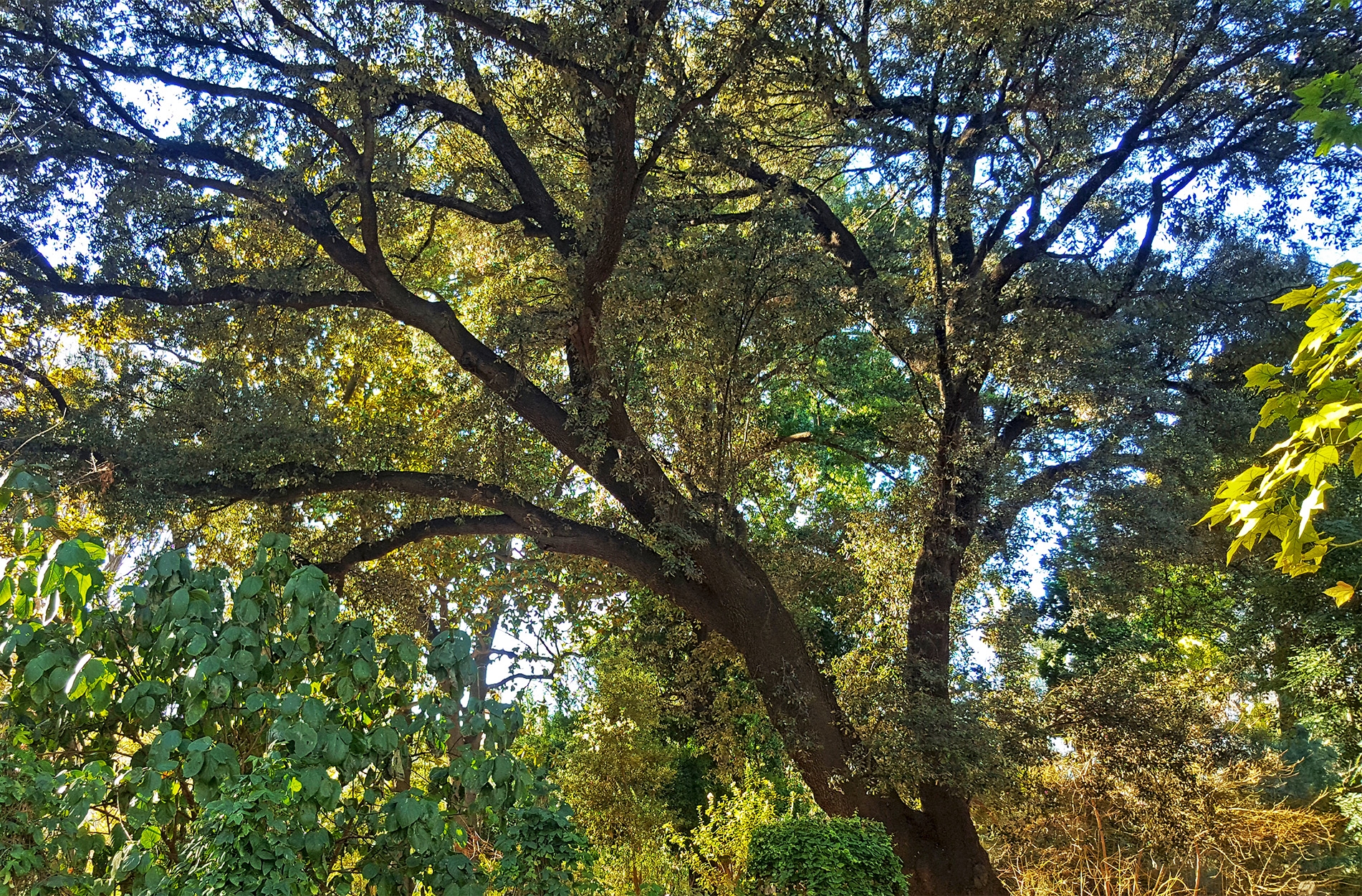
Before this year’s winter pruning, our arborist technician Marta Muñoz will help us get familiar with this common bifurcation the can see on trees. She will also explain how to assess them and how to know if they have become a structural problem and decide if it’s time to call a professional.
Winter time means pruning time. It also means low temperatures, so plants will enter their rest period by closing some intracellular compartments to avoid using their savings during the cold season. This is why pruning is less harmful in winter.
It doesn’t mean we cannot prune the rest of the year, we can as long as it’s necessary and always respects the biology of the tree. But, because today we are going to talk about trees and a lot of them have no leaves at the moment, pruning will mean lower energy costs and we will be able to access and work more easily on bare branches. So, let’s look up and pay attention to these either small or gigantic natural monuments that inhabit our parks, streets and gardens.
In this context, the most common questions are about tree forks. A controversial issue that usually raises many doubts about the tree’s stability. Today we will analyse this topic in detail.
What is a tree fork?
A tree fork is a bifurcation of the trunks or branches of trees, so we find two equivalent or nonequivalent axes, sprouting from the same point of the tree with different types of angles. Generally, forks have always been a delicate matter to consider when making a diagnosis of a tree or pruning.
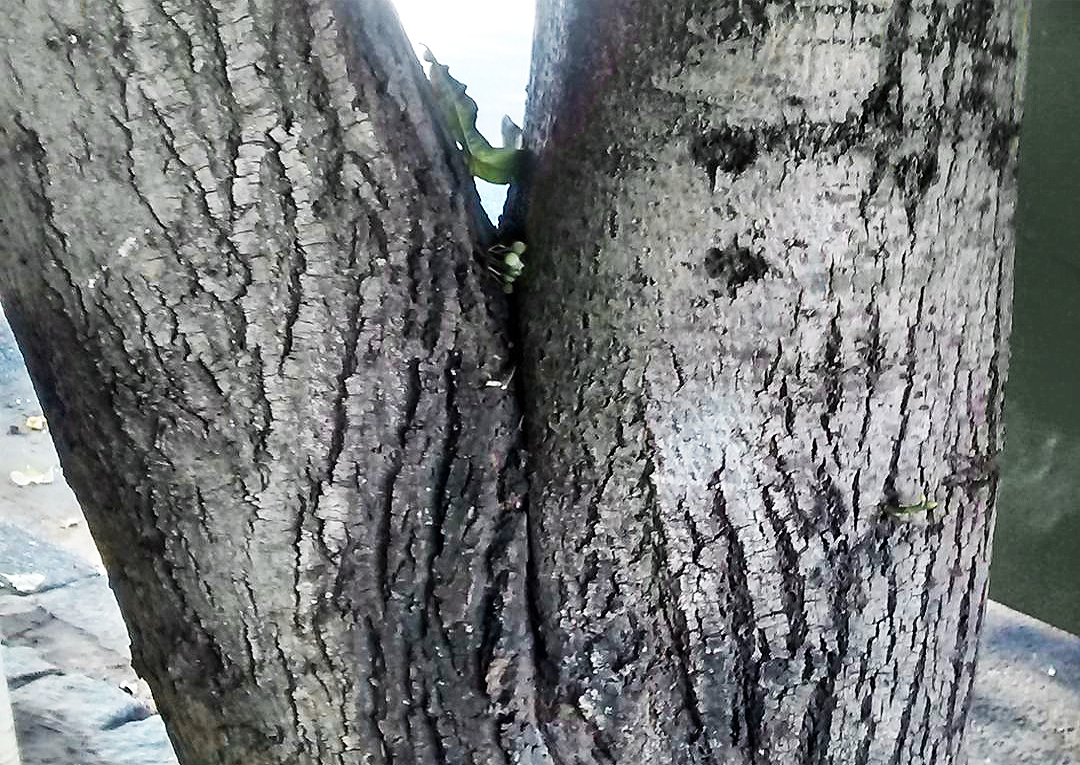 Included bark
Included bark
Since the beginning of modern arboriculture, emphasis has been placed on the problem of forks or bifurcations as structural defects capable of triggering a risk depending on the condition of their joints. Especially those shaped as a “V” or with included bark, that is when they are so closed the bark gets compressed between the two branches or trunks creating weak attachments.
These types of structures are easy to spot on main branches with acute angle insertions, whose wood fibres are not embedded in the pith of the tree, but have another type of growth that is more unstable than the branches themselves. That’s why, until recently, it was always recommended to prune them at the earliest age possible. That is called “formation pruning.
Nowadays, thanks to great professionals and researchers, we know this is not always the right solution. The species, the habitat and the development stage of the tree will determine the type of structure of each fork and will guide us to make the right decision when it comes to pruning.
When should I worry about forks?
First of all, if possible, you should read the tree’s structure and learn to identify the type of fork you are looking at. Christophe Drenou’s classification is a “simple” one you can follow. He distinguishes four groups: temporary, recurrent, main and accidental.
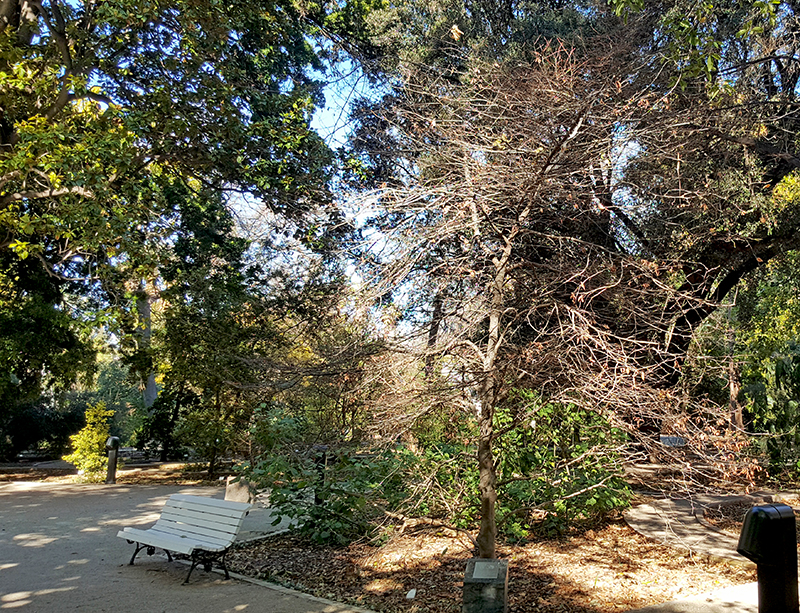 Temporary fork at the Botanical Garden of the University of Valencia (Fagus sylvatica) / Marta Muñoz
Temporary fork at the Botanical Garden of the University of Valencia (Fagus sylvatica) / Marta Muñoz
First, we will talk about temporary forks, hese are typical of young plants under stress caused, for example, by a lack of light or space. These forks form to increase the tree’s guarantee of survival. The main branch bifurcates in order to have growing optimal conditions. For example, when there is not much light in a dense forest, the beech (Fagus sylvatica) tends to form its own structure consisting of temporary forks. This structure is completely different from the one it has when it grows in an open forest without rivals. Generally, these forks are reabsorbed or redirected by the tree as the tree reaches its adult phase.
Recurrent forks, on the other hand, appear annually at the end of the trunk and are typical of the Ulmaceae and Fagaceae families, among others. Generally, these are not usually forks with a risk of falling, since they grow in a “U” shape, not in a “V” shape and do not have included bark. They should not be cut because they are part of the tree’s natural structure.
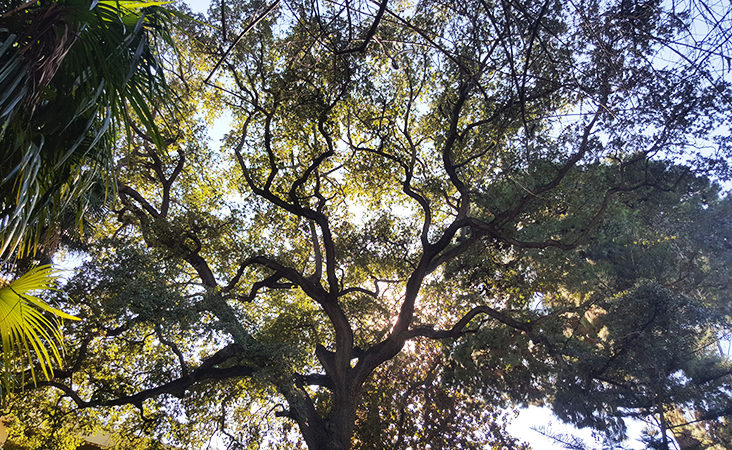 Recurrent fork at the Botanical Garden of the University of Valencia (Quercus virginiana) / Marta Muñoz
Recurrent fork at the Botanical Garden of the University of Valencia (Quercus virginiana) / Marta Muñoz
And then we have main forks. Typical of adult trees, they mark the end of the trunk formation. It is the final result of a long and progressive systematic branch metamorphosis. They are created to sustain the main branches and create the tree’s definitive crown. Ideally, if the fork is well established, we should not intervene because it is a sign of a good structural formation. However, we should check the insertion between the two main branches.
And, last but not least, we can find accidental forks. Usually, this type of bifurcation appears after a traumatic accident suffered on the tree’s main guide. These accidents can be caused by rodents eating the tree at an early age or by frosts, among others. After the loss of the main guide, the dominant apical bud loses its hierarchy and the sprouts that follow try to take its place. Generally, this type of fork is extremely difficult to remove once the tree enters its adult stage.
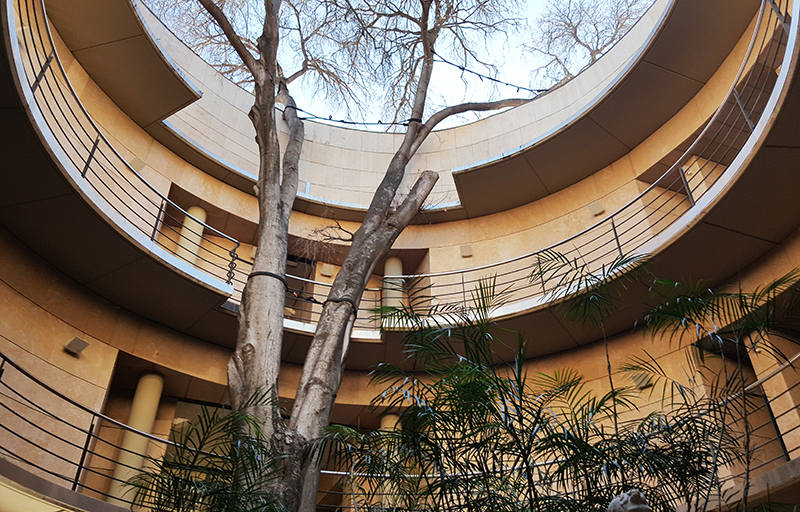 Accidental fork at the Botanical Garden of the University of Valencia (Celtis australis) / Marta Muñoz
Accidental fork at the Botanical Garden of the University of Valencia (Celtis australis) / Marta Muñoz
How can we distinguish between main forks and accidental forks on an adult tree?
As we have said before, main forks appear when a tree enters its adult stage. Nevertheless, accidental forks can appear at any moment, they are unpredictable and will keep growing with the tree. Therefore, when a fork is consolidated in a tree, two situations can be observed:
 Main fork at the Botanical Garden of the University of Valencia (Brachychiton populneus) / Marta Muñoz
Main fork at the Botanical Garden of the University of Valencia (Brachychiton populneus) / Marta Muñoz
1. Main fork: the tree produces shorter branches than the trunk and these same forks produce even smaller branches and so on until the whole tree crown is formed. 2. Accidental fork: from the fork, we can see vertical branches that are clearly longer than the trunk.
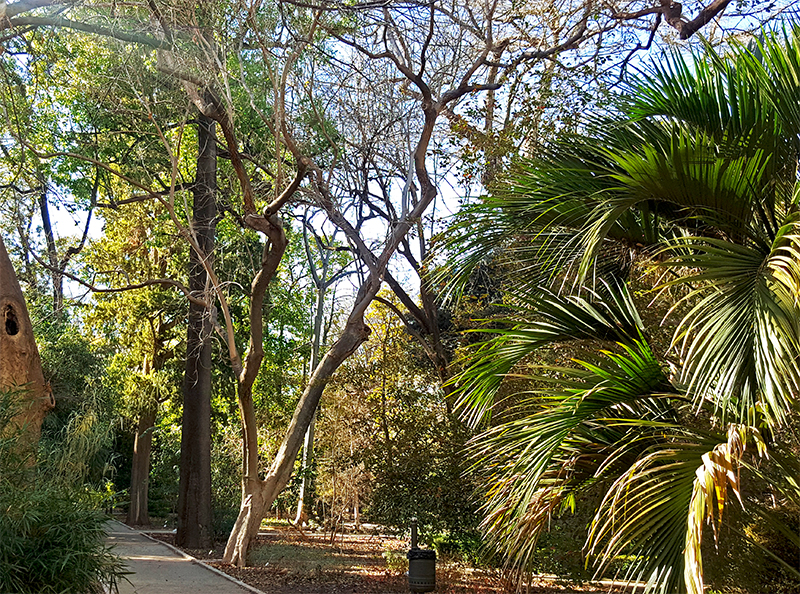 Accidental fork at the Botanical Garden of the University of Valencia (Sapindus spicatus) / Marta Muñoz
Accidental fork at the Botanical Garden of the University of Valencia (Sapindus spicatus) / Marta Muñoz
In summary, after a quick look at the forks of a tree, it is important to decide on which type of fork we can do a formation pruning. It is not recommended on temporary forks, recurrent forks and main forks because they are part of the tree’s natural process, so this type of pruning can be harmful.
On the contrary, when there are accidental forks, if the condition of the tree allows it, it is recommended to do a formation pruning. However, at this point, it would be better to call a professional arborist who can help you avoid bad decisions and keep the tree healthy.





